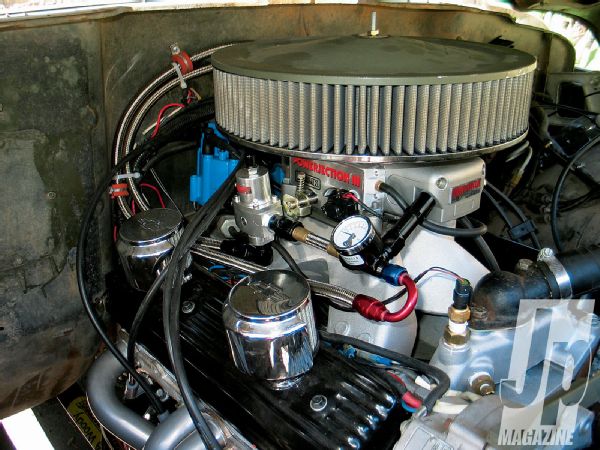
 Christian Hazel
Brand Manager, Four Wheeler
Christian Hazel
Brand Manager, Four Wheeler
In the March '10 issue, I dyno'd a warmed-over Chevy 350 I built for my '68 M-715 and topped it off with a Professional Products Powerjection III fuel-injection system. Despite a rumpity cam with a narrow (for fuel-injection) 110-degree lobe separation angle and a huge Professional Products Hurricane single-plenum intake manifold, the engine idled nicely down to 750rpm and delivered 388hp @ 6,200rpm and a flat torque curve that peaked at 399lb-ft @4,200rpm. It's all good stuff in a controlled dyno environment, but how would it work in the real world, where operating temperatures, atmospheric conditions, and pump gas quality come into play? Those are the questions a surprising number of you emailed after the first installment of this story.

Well, the Powerjection III is now on the truck and I've been driving the rubber off the rear tires-literally. It's got power on tap to fry the hides pretty much whenever I want. And as for the Powerjection III's ease of install and drivability with no tuning? It's completely true.
The injection comes with very detailed installation instructions, and it's an intuitive system that goes on easy in an afternoon. The hardest part is building the high-pressure fuel lines if your vehicle isn't already equipped. And since the injection remembered my engine from the dyno, I didn't even need to plug in my laptop. I just fired it up and let it settle into an idle for a minute or two before my first drive. It took a couple of miles for the system to fully come up to speed, but after that the drivability and power delivery were way better than I had ever experienced with this truck. You just mash your foot down and there's no complaining; the engine just hunkers down and pulls strong up to my self-imposed redline of 6,500rpm. Buzzing down the road there's no more smell of unburned exhaust from an overly-rich carb, and I swear that the fuel gauge isn't dropping as quickly.
On the road, the power delivery is smooth and linear down below 3,000rpm and when rowing through the gears. It's so nice to have that off-idle stumble of the old carburetor gone. Once in a while I do note some very slight hesitation, but I attribute that to the huge intake manifold plenum and not the injection. In fact, having owned similarly-built engines running carburetors, I'm amazed that this combination is as drivable as it is at lower rpms. Off-road, even with sustained slow-speed crawling, the injection keeps the engine from loading and stumbling despite the race-oriented intake. It maintains a docile manner until I get impatient and put my foot in it, at which time it springs to life like an ax murderer lunging at a victim. And naturally, it'll do so at any angle no matter how steep, bumpy, or undulating the terrain.
To answer in a nutshell all the reader questions asking what the catch was with this easy-to-install, surprisingly affordable fuel-injection system, I'm happy to report that there doesn't seem to be one. So far, it's proven to be a great injection system that's worth the entry fee.
PhotosView Slideshow

 PhotosView Slideshow
PhotosView Slideshow


